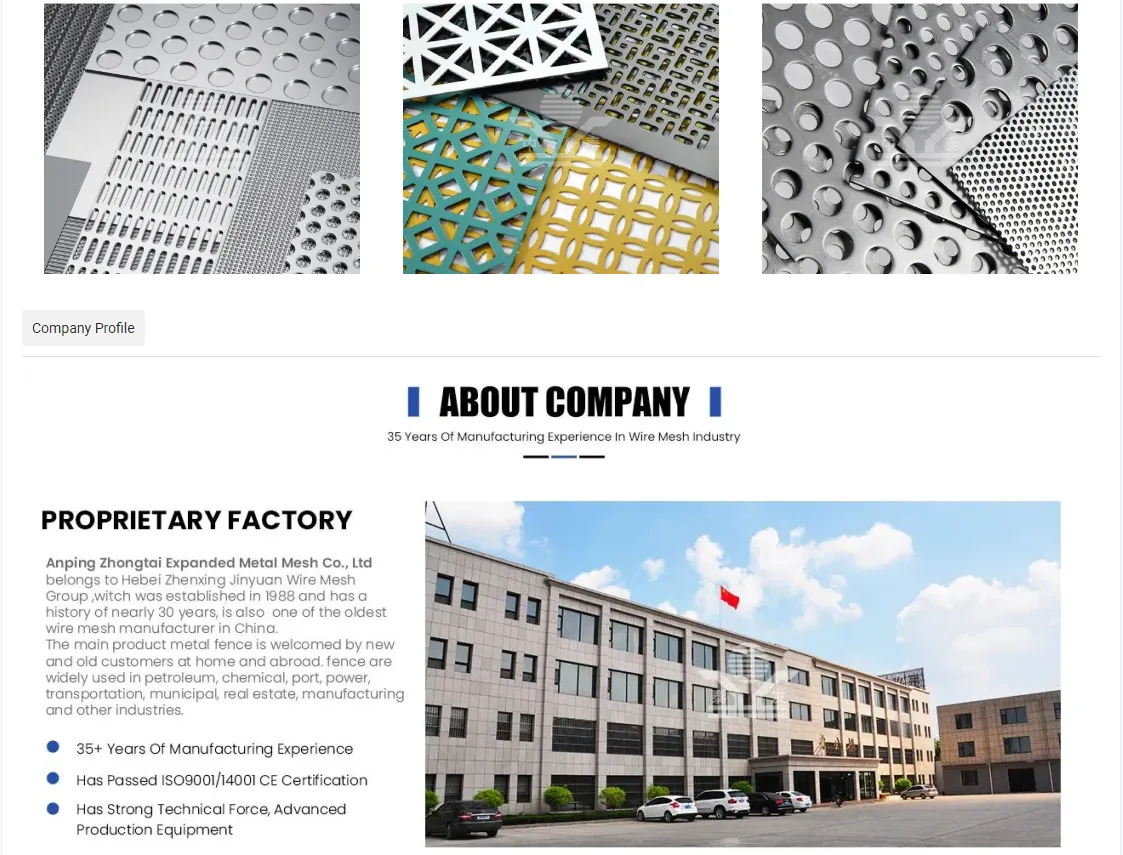Understanding Anti-Climb Mesh Security Solutions for Modern Challenges
In today’s world, security is a top priority for many businesses, institutions, and residential areas. The increasing need to safeguard properties from intruders has led to the development of various security measures, one of the most effective being anti-climb mesh fencing. This innovative solution combines strength and aesthetic appeal, tailored to prevent unauthorized access while maintaining visibility and airflow.
What is Anti-Climb Mesh?
Anti-climb mesh is a specialized type of fencing designed to deter trespassers and enhance security. Deployed primarily in high-risk zones, this fencing features closely spaced, reinforced wire mesh that is difficult to climb. Unlike traditional fences, anti-climb mesh fences discourage both casual and determined intruders by making it nearly impossible to gain a foothold.
Design and Structure
The design of anti-climb mesh involves the use of high-tensile strength wire, typically galvanized or coated to resist corrosion. The mesh usually has small openings, often less than 50mm, which prevent any foothold for climbers. The configuration is both functional and aesthetically acceptable, making it suitable for various environments—from industrial sites and schools to parks and residential areas.
Additionally, anti-climb mesh is often mounted on robust posts, which contribute to its stability and durability. These fences can be installed at various heights, ensuring maximum security based on specific needs. Apart from its climbing resistance, the mesh allows for visibility, ensuring that surveillance can be easily conducted without obstructions.
Applications
anti climb mesh

Anti-climb mesh is ideal for a range of applications. In industrial settings, it secures perimeters against unauthorized vehicle intrusions and employee misconduct. Schools utilize this fencing to create safe environments for students while controlling access to restricted areas. Additionally, residential complexes benefit from anti-climb mesh by enhancing security while preserving the neighborhood’s aesthetic value.
Moreover, these fences often serve governmental and military facilities. Their robust design and resistance to climbing help protect sensitive information and critical infrastructure. The transparency of the mesh further allows for effective security monitoring while ensuring that the premises remain visible from the outside, discouraging potential offenders.
Benefits
One of the primary advantages of anti-climb mesh is its deterrent effect. Intruders, upon seeing such robust and impenetrable barriers, are likely to seek easier targets, effectively reducing the risk of break-ins. Furthermore, these fences are relatively low-maintenance, created with materials that withstand the elements, making them a long-term investment in security.
Additionally, anti-climb mesh can be customized with added features such as barbed wire at the top or electronic fencing systems for enhanced protection. This adaptability allows property owners to tailor their security solutions based on specific threats and situations.
Conclusion
In conclusion, anti-climb mesh fencing is a modern, effective solution to the increasing security challenges faced by various sectors today. Its unique design not only enhances safety but does so without compromising visual appeal. As urban areas grow and security threats evolve, investing in anti-climb mesh can provide peace of mind and protection for properties, businesses, and communities alike.
By recognizing the importance of robust security measures, property owners can stay one step ahead of potential threats, ensuring their spaces remain safe and secure. As the demand for effective deterrents continues to grow, anti-climb mesh stands out as an essential component of comprehensive security strategies in an increasingly complex world.
-
Why Galvanized Trench Cover Steel Grating Resists Corrosion
NewsJul.10,2025
-
The Versatility and Strength of Stainless Expanded Metal Mesh
NewsJul.10,2025
-
Load Calculations in Steel Grating Platforms
NewsJul.10,2025
-
Keeping Pets and Kids Safe with Chicken Wire Deck Railing
NewsJul.10,2025
-
Hole Diameter and Pitch for Round Perforated Metal Sheets
NewsJul.10,2025
-
Aluminium Diamond Mesh in Modern Architecture
NewsJul.10,2025
Subscribe now!
Stay up to date with the latest on Fry Steeland industry news.

